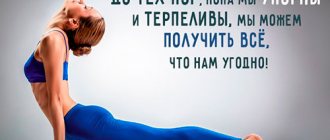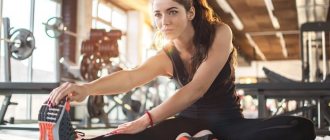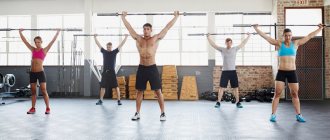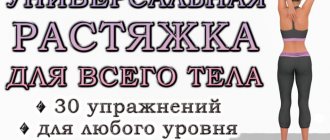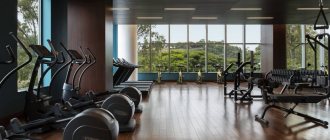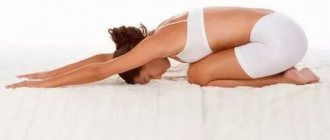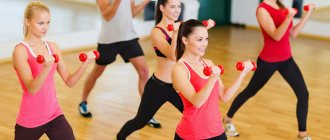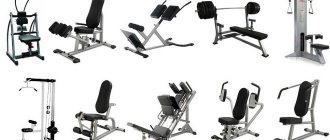© Bojan - stock.adobe.com
Share:
Stretching is the second name for muscle stretching. Recently, there has been a boom in stretching, splits and flexibility schools. Marathons with quite complex exercises are held on social networks, and classes in this format are becoming increasingly popular in fitness clubs. Why? People are a little tired of “iron” sports or simply realized that without flexibility you can’t achieve strength. Stretching itself does not burn fat or build muscle mass, but it is useful for both improving your health and improving athletic performance.
What is stretching?
It can be understood in two ways:
- As part of a regular workout, do stretching exercises after strength training or cardio. Then each muscle group is stretched for 20-30 seconds, sometimes 2-3 times. Certain groups, such as the hamstrings and glutes, may take a little longer.
- As a self-contained group class. There are also possible options here. The training can be carried out either in the form of “stretch to the amplitude that is acceptable for the body and do not force it,” or in a format where the instructor stretches the trainees, literally helping them overcome sticking points.
Lessons in fitness clubs usually take place in a relatively safe manner. Their goal is simply to relax the muscles, increase mobility, elasticity, and reduce pain after training .
It’s a completely different matter for schools and studios whose goal is to make the client do the splits. It uses elements from rhythmic gymnastics and aggressive stretching with ballistic springy movements. Before visiting such establishments, it is worth soberly assessing your health status, preferably with a doctor.
What mistakes do newbies make?
For some reason, everyone associates stretching with unbearable pain. Of course, if you try to do the splits from the first lesson without preparation, it will be “a little unpleasant.” Stretching exercises should give you a pleasant feeling, or, in extreme cases, slight discomfort. Therefore, you need to do everything gradually, slowly and regularly.
Of course, not everyone is patient and many dream of making themselves a “candy” right away.
Quickly do the splits or get the perfect stretch
Focusing on results is always good, but in sports nothing happens instantly. You won’t be able to get a sculpted body in two months, see abs in a week, and reduce your waist size significantly in a day. It’s the same with stretching - stretching will appear gradually, after a month or a month and a half. You definitely won’t be able to do the splits right away if you didn’t have a base before.
Differences between stretching and other types of fitness
Stretching does not have the goal of making you slim or removing problem areas. Everything that is written and said on this topic is nothing more than a marketing ploy. Flexibility is a completely different physical quality. She helps people:
- avoid household injuries during sudden bends, movements on ice or sand;
- lift fairly heavy weights without injury;
- move freely in dance;
- show acrobatic tricks;
- do gymnastics more successfully;
- maintain a comfortable position of the back and spine while sitting;
- work without pain in the garden, vegetable garden, around the house.
But what about the grace of a ballerina and the lean muscles of a dancer? This is achieved by high amounts of high rep and plyometric work on the same muscle group, high caloric expenditure (more from food) to burn fat, and a fairly restrictive diet.
Alvin Cosgrow, author of the book on women's fitness and health, The New Rules of Weight Lifting for Women, writes that stretching is an important part of physical fitness, but Western girls' obsession with yoga, Pilates and stretching will not lead them to the figures they want to achieve. . One hour of stretching a week is plenty if you're serious about strength training, or a standard 10-minute cool-down at the end of a session if you're just trying to burn a few extra calories and increase your physical activity.
© Photographee.eu - stock.adobe.com
What are people saying?
Many people are happy after stretching: reviews say that they not only improved their body flexibility, but also became more alert, more energetic and even lost weight. Stiffness disappears somewhere, movements become easy and smooth. But the most important thing is that a person, having reached a new limit, begins to believe in his own strength and be proud of himself. And this is the strongest motivation for further growth. In addition to this point, stretching (photos can be seen in our article) is a good basis for practicing other sports where agility, flexibility and endurance are important. But if a person does not plan to engage in sports at a professional level, then he will still do very well for himself by stretching his own body.
Main types
The types of stretching in fitness theory are as follows:
- Static - uniform pressure on the lever, that is, an arm or leg, with a slow and feasible stretching of the muscle. Technically, it is not static, because as the muscle relaxes, the body changes position and the stretch deepens. This is just a name to contrast it with the dynamic subspecies.
- Dynamic - performing gymnastic exercises in a gradually deepening amplitude. A classic example is lunges, first with a small amplitude, when the thigh is above parallel with the floor, and then until the knee touches the supporting leg of the floor.
- Ballistic is the very “pushing” of the body into the desired position. Hand pressure on the body, legs, rocking up and down, springs. Just a year ago, all textbooks for trainers wrote that ballistic stretching is not for recreational physical education. Now the trend has changed, but the methodological base has not. Instructors are still not taught this type of stretching.
Aerostretching
Quite a new trend in fitness. Appeared in response to the growing fashion for stretching. The essence of aerostretching is stretching the body in special hammocks (aerohammocks). During exercise, the spine does not experience stress; on the contrary, the whole body is stretched from the top to the heels. The most important thing is to let go of fear and completely trust the airhammock.
One more clarification - it’s not bad if you “pump up” your hands first. When moving from one pose to another, you have to rely only on the strength of your own hands.
Classes are suitable for everyone, except for those who do not want inverted poses - as a rule, these are people with high blood pressure and pregnant women.
Benefits of classes
Stretching is a preventative lesson. Training helps you avoid everyday injuries and improve your performance in sports and dancing. They relieve discomfort in muscles and joints after sitting in the same position. Another benefit of stretching is improving posture, getting rid of posture disorders for those who have them associated with hypertonicity of certain muscles, such as the trapezius.
Training restores emotional peace, improves psychological well-being, and helps relieve stress. They improve blood circulation and help recover after major strength training.
Can stretching replace other activities? No. It only improves flexibility. To prevent diseases of the joints and bones, dosed strength load is needed. It helps strengthen bone tissue and helps prevent osteoporosis in women.
Stretch won't do much for your cardiovascular system either. It partly improves blood circulation and facilitates the work of the heart, but does not affect the health of the myocardium itself.
Stretching: effect on the body
Stretching is comparable in effectiveness to yoga. It has a truly specific and beneficial effect on the body. First of all, from the first lesson, blood circulation and lymph flow improves, thus, muscles and skin receive a stronger influx of nutrients, while at the same time waste, toxins and excess fluid are removed from the body. This is why many people choose stretching as a way to lose weight . Despite the fact that the loads in this sport are serious, there is no need to jump, run and do other exercises that are difficult for people with high weights. In this case, the process of losing weight occurs naturally and gently. Therefore, there are no problems with sagging skin or a sharp decrease in performance, as with diets and hard, grueling exercise in gyms. Regular exercise helps get rid of puffiness, excess weight, unhealthy skin color, and your health becomes much better. The overall tone of the body and resistance to infections increases. However, these improvements in the body's condition are inherent in all active sports. What can stretching itself offer?
This sport helps muscles recover, since during exercise they move from a contracted state to a resting mode, that is, to their previous length. This helps maintain the elasticity of tissues and improves their supply of nutrients. Such exercises significantly increase the tone of the muscle corset and help the limbs recover after fractures and muscle atrophy. Regular exercise slows down the aging process in the body, both bones and muscles, joints, skin and internal organs. Stretching exercises not only help to increase flexibility, stretch the spine, improve the condition of the joints, but also have a beneficial effect on the psychological state, as they relieve excessive tension, and therefore stress. Stretching has a deeply relaxing and calming effect on the body, relieves pain of various origins, including those caused by nervous, mental or physical strain or stress.
And finally, improving the condition of the muscle corset cannot but affect posture, gait and coordination of movements. After six months of training, people lose the habit of slouching, due to which a couple of centimeters are “added” to their height, their gait becomes smooth and measured, and their silhouette becomes fit, athletic and graceful. In addition, any proper physical activity prolongs health, youth and life. And if you start to enjoy your activities, then optimism and a good mood are guaranteed to you: due to a general increase in tone, improved health and appearance, and, of course, a favorite hobby that will make your life more interesting.
Basic rules and tips for training at home
Home workouts are very popular. To make them safe, it is better to go to several classes at a fitness club or group and learn the exercise technique. For those who study via video, we can only advise you to watch it several times, stop recording and clarify if something is not yet clear. Stretching for beginners excludes splits and gymnastic elements.
The training must follow the rules:
- First - a warm-up, which increases body temperature, increases joint mobility and accelerates blood circulation. Steps in place, walking with high knees, bending forward and to the sides, squats, push-ups and crunches are suitable as a warm-up.
- Each muscle is pulled for no more than 30-40 seconds per approach , if we are talking about beginners. Gradually, you can move on to working on your well-being, as soon as you are sure that you can control your condition.
- When stretching on your own, you should avoid sharp pain, the feeling that something might rupture, or twisting in the joints.
- Normally, there should be a feeling of tension in the muscles, but not severe unbearable pain.
- Sensations are individual, but you need to focus on them, and not on the range of movements in the picture or video. People's flexibility is an individual indicator; everyone cannot be equally successful in stretching.
Important: you should not do exercises directly under the air conditioner, on a slippery mat or in a drafty room. So there will be more harm than good.
How often do you stretch? If you don’t have a goal to do the splits or stand on a bridge, an hour-long lesson once a week or even 30 minutes is enough. Ekaterina Firsova makes video lessons of shorter duration, Katya Buida – longer, and each student determines the duration for himself.
A good option for a complex for training at home in two parts from Ekaterina:
Different types of yoga - different clothes
If synthetics do not transmit, but screen or repel energy, then cotton behaves completely differently. But it is not 100% suitable for successful twists, flips, and jumps. A small part of elastane gives the material elasticity. One way or another, yoga pants and T-shirts are made from natural materials. The upper part of the clothing often fits the chest, but does not constrict tightly. But meditative practices are more democratic in terms of choosing the top.
- It’s better to buy a T-shirt or top when dealing with basic poses that involve active arm movements
- It’s worth buying crop tops with a shallow neckline for active physical exercise - so that when bending over you don’t show everyone your breasts and “karma”
- It’s best to buy a sports bra for Bikram yoga - pay attention to the degree of tightness, the level of breast fixation
- buy t-shirts with esoteric prints needed for stretching, body flexion and yoga photo shoot
- layered yoga clothes are perfect for Iyengar or Vinyasa
- A yoga swimsuit will help you feel comfortable in the fresh air if you suddenly decide to practice yoga in the garden, on the seashore or in the mountains.
High-quality clothing allows you to twist in any asana
But when choosing pants, the question will definitely not be an issue, because modern yoga fashion offers a lot of interesting options for dressing up: from Afghani pants to the original wide Aladdin, leggings and knitted shorts. Again, depending on the type of activity, choose comfortable and practical clothes that stretch well and fit your figure:
- look for loose pants for lunges or stretches on the counters with Aladdin or Afghanis;
- It is better to buy long pants for yoga if you practice lessons with a minimum number of fast movements;
- fashionable three-quarter length pants are worth buying for active programs;
- It’s better to buy cycling shorts for Bikram yoga;
- shorts and leggings will be a universal option for any type of yoga class.
Designer yoga pants are not lacking in style
Cotton yoga clothes with a small percentage of elastane are an ideal choice.
Clothes and equipment for classes
Train in any comfortable clothes - tights or leggings, T-shirt or rash guard. Long sleeves are needed for club lessons, supportive fabrics are for athletes who may experience severe muscle discomfort while stretching. Stretching at home is more democratic; what to wear is decided by the practitioner himself, based on convenience.
Split stretching exercises may additionally require:
- Small pillows with a slippery surface. They kneel on them when doing exercises.
- Yoga straps and cubes – help increase range of motion.
- Knee pads and shoes are useful for training in a gymnastics format.
You can practice at home wearing socks or even without them. A yoga mat is required in all cases.
© DragonImages - stock.adobe.com
Should you buy tight-fitting clothes or loose-fitting ones for yoga?
In the IndiaStyle store you can buy clothes that perfectly combine simplicity and thoughtfulness, finding a balance between the spiritual and the material. Here you can buy loose Aladdins, Zouave or anatomically cut leggings with correctly positioned seams. And be sure to buy bright yoga pants with elegant decor, without unnecessary details (laces, buttons and zippers).
It's very easy to stay on trend, even if you're too far into yourself
Aladdin or bloomers look natural on both men and women
Yoga pants go perfectly with T-shirts, tank tops and women's fit tops. High-quality designer clothes for yoga classes make Eastern practice comfortable and fill you with peace. Plus, having new cute yoga clothes gives you extra motivation not to miss your classes!
Approximate workout routine
The simplest stretching complex for stretching at home was developed by exercise therapy instructors:
- Neck stretch. Stand with your knees slightly bent and the natural arch of your lower back removed. Stretch your head up towards the ceiling. Lower your chin to your chest. Stretch your arms down. Feel the stretch in the longus muscle along the spine.
- Stretching the thoracic region. From a standing position, stand on your toes and stretch your arms forward, relaxing your back.
- Stretches the obliques and latissimus dorsi. Stand steadily, with your feet slightly wider than your shoulders, bend to the side, first in a plane parallel to the axis of the spine, holding for 30 seconds, and then twisting slightly so that your back also feels stretched.
- Stretching the hip extensors and rectus abdominis muscles. Get into a lunge position and gradually lower yourself down to the available range. The toe of the supporting leg should be behind, lower yourself to an accessible depth, stretch your hands up and back, stretching the front surface of the body. Switch legs.
- Stretching the hamstrings and gluteal muscles. From the “feet wider than shoulder width” position, bend forward, lower yourself so that your hands touch the floor, and fix the tilt. Try not to hunch your back.
- Perform alternating bends on each leg, without twisting the pelvis, to deepen the stretch.
- Sit on the floor on your buttocks and bend towards your feet, grabbing your toes with your hands. The legs are spread, but you should not force the position and pull into the splits.
- The calf muscles can be stretched by pulling your toes toward you and your heels toward the wall from a lying position.
- Complete the stretch by stretching your arms upward while lying down.
You can also look at another stretching option for beginners:
Increased wear and tear
Remember that in stretching you should never force yourself. If you get too carried away with stretching, you can seriously damage the ligaments, and this is painful and will take you out of your training session for a long time. When stretching one of the muscles, you should not press on it for more than 30 seconds. It is important to remember to take short rests during exercise.
Fascination with jerky stretching
Some people use the jerky stretching method in stretching, but this is quite traumatic and undesirable for beginner gymnasts. It is better to spend more time on exercises than to suddenly start stretching your muscles.
Therefore, regularity and patience are your best friends for achieving athletic heights.
Stretching and pregnancy
Stretching during pregnancy is allowed and even encouraged. It will improve blood circulation and partially help relieve pain in the lower back and legs. You can perform the usual exercises, but with the following exceptions:
- During the first trimester, any aggressive stretching that can cause tension in the abdominal muscles is not recommended. We are talking about stretching while hanging on a horizontal bar, in inversion boots, and also with the help of an instructor.
- In the second and third, exercises with emphasis on the stomach from a supine position are excluded.
Ideally, you need a pregnancy video or a corresponding group of classes. Those who have been practicing stretching for a long time can independently dose the load.
A training option for pregnant women is presented in the following video:
If you experience any unusual sensations of exertion, you should stop and consult a doctor . The complex itself can be selected by both a physical therapy doctor and a fitness specialist for pregnant women.
Recipes for healthy eating
Soup with carrots, potatoes and vegetables
- 0.5 g Protein
- 0.2 g Fat
- 2.9 g Carbohydrates
- 14 kcal
40-60 minutes
- #vegetarian dish
- #dietary
- #for vegans
- #carrot
- #low calorie
- #dinner
- #vegetables
- #vegetable dish
- #olive oil
- #onion
- #celery
- #spices
- #dinner
- #garlic
Other recipes
Effective stretching exercises
The following is a list of simple but effective exercises:
- Place the palm of your right hand on your left ear. Tilt your head to the right and lower your left shoulder down. Then switch hands. Do not make sudden movements, pull smoothly.
- Stand up, clasp your hands behind your back and begin to lean forward very slowly, while raising your straightened arms up. Lift as high as you can. Hold for a few seconds, then return to the starting position.
- Lying on your back, cross your right leg bent at the knee over your left. Use your left hand to press your leg closer to the floor. Repeat with the other leg.
- Place your heel on the chair seat. Bend the other leg slightly at the knee. For a better stretch, place your hands on the upper thigh of your raised leg and lean toward it as far as you can.
You can see these and other exercises in the photo selection:
Contraindications to stretching exercises
There are some contraindications that do not guarantee a positive effect and can cause harm if they are neglected.
Let's look at the main disorders with which you should refrain from stretching.
- People with fresh fractures , since the recently damaged bones have not yet fully recovered, and can receive a new, even more dangerous injury from sudden movements and sprains.
- Dislocations also negatively affect the level of training and will not allow you to fully engage. The tissue remains torn and requires treatment. The slightest dislocation can turn into a habitual one!
- If you have osteoporosis and arthrosis , it is better to avoid stretch marks altogether. If you want to practice, you should do this only under the strict supervision of a specialist.
- Never stop stretching after recent strength exercises that put enormous strain on you. Pulling movements can destroy its integrity.
- But the most important contraindication is cardiovascular diseases ! Never start a course of exercises without medical advice. Do not expose your body to mortal danger.
For beginners about stretching
Stretching is a training system that increases flexibility , strengthens tendons, and normalizes blood circulation. On an emotional level, it gives calmness and tranquility, positive emotions and normalization of sleep. If you want to engage in gradual and targeted training that radically changes the body, filling the body with health and flexibility, stretching is ideal for you.
The advantages of stretching are obvious:
- relief from pain in the spine,
- relief in muscles
- improving blood circulation.
A set of exercises will have an irreplaceable effect on the female body: it will relieve PMS syndrome and restore the menstrual cycle.
The most important rule for initial training is not to exceed the load for an untrained body.
Before starting training, it is recommended to consult a physiotherapist.
Contraindications to exercise are minimal, but they do exist: for people suffering from hypertension and damage to the pelvic joints.
For all those who have no contraindications, stretching only brings a healing effect for the whole body .
The essence of the exercises is to minimize but increase the intensity of stretching so that a slight tension is maintained .
“Gymnastics prolongs a person’s youth,” while its variety, such as stretching, aimed at stretching muscle tissue, helps, in addition to delaying old age, to achieve several goals .
This is stimulation of the immune system and maintaining the body in good shape and, if necessary, restoring it.
Stretching helps relieve nervous tension and stress.
This type of fitness, which is taught in our dance studio under the guidance of experienced trainers, helps make the skin elastic, acquire slender posture and ideal figure lines. To maximize the aesthetic and therapeutic effect of training, and to make attending it comfortable, it is necessary to choose the right clothing for sports.
Basic requirements for things for stretching
The main thing is that stretching clothes are as comfortable as possible for you, do not restrict movement, do not sting, and stretch well. Our studio teachers recommend giving preference to the following combinations of wardrobe items for training:
- Tight top and leggings;
- Sweatpants and T-shirt;
- Leggings and T-shirt;
- Tight top and loose sweatpants;
- Overalls;
- Wide sports jacket and leggings.
The material of clothing for stretching should have good stretch, not accumulate moisture, and allow air to circulate freely, which is only possible when using high-quality fabrics when sewing.
Mostly these are things made of cotton or synthetic knitwear - it retains heat well and does not create a “greenhouse effect”.
Attention should be paid to the style of clothing - in order for you to feel comfortable and confident during training, it must correspond to your already formed preferences.
Tips for selecting additional small items
Since the main task of stretching is stretching , shoes for exercise must be chosen that are soft and light, of a sports style. These can be leather moccasins, Czech shoes, ballet shoes, sneakers, made exclusively from natural materials that allow the skin to breathe. Many people choose to avoid wearing shoes when working out, exercising barefoot or opting for cotton socks.
If you have long hair, so that it does not interfere with your exercises, you can braid your hair, put it in a ponytail or a bun. For convenience, it is advisable to secure shorter curls with a headband or hide them under a bandana. Watches, various jewelry and other accessories create inconvenience when performing exercises, so it is better to put them aside during training.
The choice of underwear is especially important for comfort during exercise. It is advisable to wear seamless and not too tight models that do not have decorative details in the form of ribbons, rhinestones and other decorations. To prevent your underwear from cutting painfully into your body during exercise, it is better to avoid thongs. The bra should not have underwires; it is advisable to choose models with wide, tight straps.
Other accessories that may be useful during training:
- Non-slip dense mat with dimensions of about 1.5x1 m;
- A yoga “brick”, which, if the muscles of the buttocks and thighs are insufficiently stretched, is placed under them when performing exercises in a sitting position;
- A leather strap is used to develop the hips.
If you want to perfect your figure, gain self-confidence, and improve your well-being, stretching classes in our dance studio will help you with this. You can choose the most convenient training schedule for yourself, which does not require prior sports training. To attend classes you will only need comfortable wardrobe items, because, as M. Plisetskaya said: “Clothing dictates behavior .


